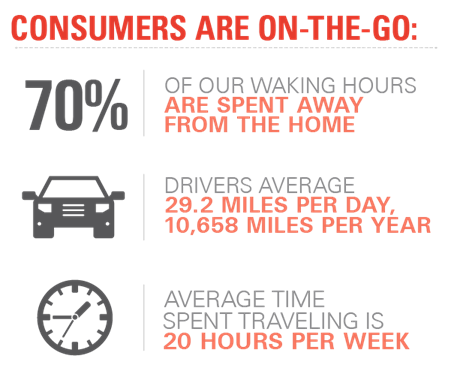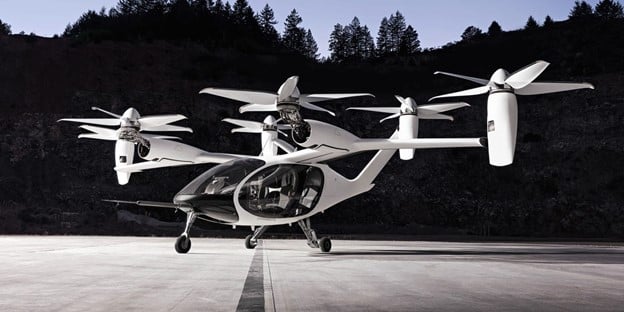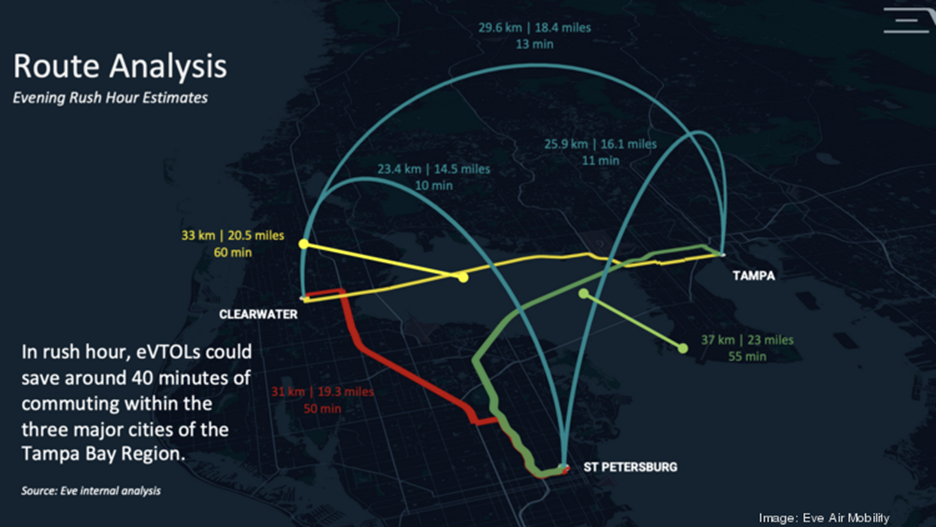
Editor’s note: This story was previously published in September 2023 with the title, “The Ultimate Explosive ‘Sleeper’ Tech of 2024.” It has since been updated to include the most relevant information available.
If I were to ask you to imagine the future of transportation, what would you picture?
You’d probably envision roads filled with all kinds of electric vehicles. Perhaps they’d all be driving themselves, powered by high-tech sensors and the latest AI technology.
That’s the future of transportation that most people likely imagine. I imagine the same.
But when I think about the transportation of the future, I also foresee another type of technology – one that most people today probably consider downright silly: Flying cars.
Yes, you read that right. I think flying cars will play a large role in the future of transportation. And when I say future, I don’t mean 2040 or ‘50. I mean this year – in 2025.
Indeed, based on the latest industry developments, we could start seeing flying cars in major cities this year. And I think that within just a few years, flying cars could comprise a multi-hundred-billion-dollar industry.
That’s why I believe a massive “sleeper” investment opportunity lies in the completely underrated flying car industry.
This may sound crazy to you. If it does, you’re not alone. Most folks I talk to about this idea just chuckle or roll their eyes.
But trust me, folks: flying cars are coming soon to a city near you much sooner than you may think. They’re going to be huge, helping to transform the way we all travel. And they’re arguably the best money-making opportunity that you never knew about.
Flying Cars: The Origin Story
Every revolutionary technological breakthrough has an origin story.
The idea of a flying car has been floated by scientists, auto execs, and futurists for decades. But for most of the 20th Century, flying cars were written off as a cool but unfeasible science-fiction concept.
Then the 2000s hit.
A combination of robust population growth, rapid urbanization, and widespread digitization all came to a head. Once-empty roads increasingly filled with passenger cars, delivery trucks, city busses, and more.
Twenty-minute daily commutes became thirty-minute commutes… then hour-long commutes… then two-hour-long commutes. Humans were wasting their lives in cars.

Suddenly, taking to the skies with flying cars would solve a big traffic problem. So, in the early 2010s, tech companies and venture capitalists across the globe began investing in that market. Their plan was to develop solutions that would allow consumers to take back their most valuable resource: time.
Shortly thereafter, the “Flying Car Revolution” began.
A Marvel of Engineering
Interestingly, the first wave of flying car companies didn’t approach the problem “car-first.” That is, they didn’t take a car and make it a flying machine. That would’ve required significant engineering.
Rather, they approached the problem “flying-first.”
How did they accomplish this?
They took a helicopter and made it smaller, cheaper, quieter, more mobile, and fully electric – a much simpler engineering feat.
In other words, in the early 2010s, various tech companies set out to create a new class of small, cheap, quiet, mobile, and electric helicopters that basically acted as “flying cars.”
That’s when a new type of technologically-advanced aircraft called eVTOL – or electric vertical takeoff and landing – was born.

These aircraft are quiet electric helicopters that are much cheaper, much easier to make, and much more mobile than traditional helicopters. For all intents and purposes, they are exactly what they were designed to be: flying cars.
As you can see, these eVTOL aircraft look very cool. But more than that, they represent a huge economic opportunity.
The Vision for Flying Cars
What’s the vision for these eVTOL aircraft?
To provide cost-effective, quiet, and fuel-efficient mid-haul air transport.
Today, we have excellent short- and long-haul transportation options. Need to go from Los Angeles to New York? Hop on a plane. Need to grab some groceries? Hop in your car.
But there exists a huge “gap” in the market for mid-haul transport.
Let’s say you want to go from Los Angeles to San Diego. A plane trip is awfully expensive for that mid-distance haul. But a car trip can take up to three or four hours, depending on traffic. A train will take at least two hours, and any Uber (UBER) drive would cost hundreds of dollars.
The transportation world presently lacks excellent mid-haul options. eVTOL aircraft aim to fix that.
They’ll work something like this…
Imagine you live in downtown Los Angeles and want to spend the weekend in San Diego. In the future, you’ll drive your car down to a local vertiport – a small-scale airport for eVTOL aircraft – and park your car. You’ll hop into an eVTOL and, for no more than $100, will be flown to a San Diego vertiport. You’ll deplane, hop in an Uber, and ride to your hotel.
It’ll take no more than 30 minutes and cost you less than a car trip.
It’s an ideal mid-haul transport solution.
And it’ll be used everywhere. Los Angeles to San Diego was just an example. Think New York City to Boston. Philadelphia to Washington, D.C. Miami to Orlando. Dallas to Houston. Reno to Las Vegas. San Francisco to Sacramento.

eVTOL can be used all across the country – the world, even. And they won’t just be used for transporting people, but goods, too.
Long-term, the vision is for eVTOL aircraft to be all over urban areas. They’ll act as “air taxis” that are constantly, quickly, cheaply, and safely flying people and goods from place to place.
The Development
When I describe eVTOL mid-haul transport systems to friends, they usually say something like: “Sounds cool. But I doubt we’ll see anything like that in the next 10 years.”
That’s a common misconception. eVTOL mid-haul transport ecosystems aren’t 10 years away. We’re confident that they’ll arrive in earnest within the next few years.
Remember when I told you that a whole bunch of tech companies were working on this problem? Well, their efforts have paid off – and now, there are dozens of working eVTOL prototypes in the world.
Boeing (BA) has eVTOL aircraft. Airbus (EADSY) has one. Uber had one. About a half-dozen air taxi startups have one, too.
The next generation of aircraft has arrived.
Sure, we’re just talking prototypes at present. But later this year, commercial eVTOL operations are expected to start for the very first time.
Joby Aviation (JOBY) – widely seen as the world’s leading eVTOL maker – has already flown multiple demonstration flights with its aircraft. Construction has begun on the company’s first-ever vertiport in Dubai. And commercial operations at that vertiport are expected to start as soon as the end of this year.
Archer Aviation (ACHR) – another top eVTOL maker – is also expected to launch commercial operations in the United Arab Emirates later this year, too.
It seems possible that both Joby and Archer launch commercial operations in the U.S. in 2026, out of cities like New York, Los Angeles, San Francisco, and Miami.
In other words, over the next 24 months, eVTOL aircraft will likely go from concept to reality – and during that time, we think eVTOL stocks could fly higher.
The Final Word on Flying Cars
JPMorgan (JPM) thinks the long-term market opportunity for eVTOL aircraft could reach $1 trillion.
And that trillion-dollar opportunity could emerge this year.
Yet, hardly anyone is talking about eVTOL stocks, which is why we think they could be the top “sleeper” picks for 2025.
But they’re not the only stocks that could do exceptionally well this year.
To help us find some of the best stocks to buy for ‘25, we’re looking to Elon Musk – the world’s richest man.
One major reason is because he has allied himself very closely with President-elect Trump. As a result, he has been named the head of the soon-to-be Department of Government Efficiency. It seems his sphere of influence, if you will, is likely to grow significantly, arguably to unprecedented levels, this year.
What will he do with that authority?
Probably a lot. But among some of the things he’s likely to do is support the industries in which he does a lot of business.
And one such industry already has the underlying enthusiasm it needs to send top stocks soaring. Of course, I’m talking about AI.
That means Musk’s own xAI could be preparing for launch… so, now is the time to invest.
Learn all about the promising ‘backdoor’ way to play xAI’s imminent takeoff.
On the date of publication, Luke Lango did not have (either directly or indirectly) any positions in the securities mentioned in this article.





